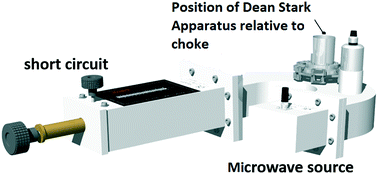当前位置:
X-MOL 学术
›
React. Chem. Eng.
›
论文详情
Our official English website, www.x-mol.net, welcomes your
feedback! (Note: you will need to create a separate account there.)
The importance of ionic conduction in microwave heated polyesterifications
Reaction Chemistry & Engineering ( IF 3.4 ) Pub Date : 2019/10/29 , DOI: 10.1039/c9re00313d George Hargreaves 1, 2, 3, 4, 5 , Adam Buttress 1, 2, 3, 4, 5 , Georgios Dimitrakis 1, 2, 3, 4, 5 , Christopher Dodds 1, 2, 3, 4, 5 , Pierre Martin-Tanchereau 5, 6, 7, 8 , Matthew G. Unthank 5, 6, 7, 8 , Derek J. Irvine 1, 2, 3, 4, 5
Reaction Chemistry & Engineering ( IF 3.4 ) Pub Date : 2019/10/29 , DOI: 10.1039/c9re00313d George Hargreaves 1, 2, 3, 4, 5 , Adam Buttress 1, 2, 3, 4, 5 , Georgios Dimitrakis 1, 2, 3, 4, 5 , Christopher Dodds 1, 2, 3, 4, 5 , Pierre Martin-Tanchereau 5, 6, 7, 8 , Matthew G. Unthank 5, 6, 7, 8 , Derek J. Irvine 1, 2, 3, 4, 5
Affiliation

|
Significant increases in the reaction rate and final conversion of a model polyesterification are reported by the use of microwave heating. These increases have been demonstrated when both organometallic and inorganic acidic catalysts have been employed. Furthermore, the results achieved by application of microwave heating were shown to be influenced by the type of catalyst that was employed. Catalyst species whose mechanistic cycles involve an associative bond were found to exhibit better performance when electromagnetic heating was applied. These observations have been attributed to the fact that electromagnetic energy in the microwave region is non-ionising and thus will not promote the cleavage of formal bonds. However, it will have significant influence on the charge separation that will be achieved in systems which involve associative bonds via an energy transfer mechanism that involves ionic conduction. This increase in rate has been attributed to two thermal effects which are both related to the implementation of microwave heating. The first is attributed to the volumetric heating of the reaction medium, i.e. efficient heating of the diol reagent leading to improved energy transfer through the entire reaction medium. This in turn results in the reaction medium achieving the target temperature in a significantly shortened time compared to conventional heating. The second is the successful application of selective heating, in this case greater efficiency by which the catalysts are heated by the electromagnetic energy as the energy couples directly into these molecular species rather than conduction/convection from the bulk reaction medium. This improved direct energy transfer leads to locally higher temperatures at these catalytic centres and so increased reaction rates, where catalysts that undergo ionic condition can interact with the non-ionising microwave energy to a greater extent than a catalyst whose cycles require the scission of a bond. Additionally, the influence of ionic conduction was also shown to lead to the rates of un-catalysed microwave heated polymerisations systems being comparable to conventionally heated samples which did contain a catalyst, thus is proposed to be a general mechanistic phenomenon and not solely focused on catalysis.
中文翻译:

离子传导在微波加热的聚酯化反应中的重要性
据报道,通过使用微波加热,反应速率和模型聚酯化反应的最终转化率显着提高。当同时使用有机金属和无机酸性催化剂时,已经证明了这些增加。此外,显示出通过施加微波加热而获得的结果受所使用的催化剂类型的影响。当应用电磁加热时,发现机械循环涉及缔合键的催化剂种类表现出更好的性能。这些观察结果归因于以下事实:微波区域中的电磁能是非电离的,因此不会促进形式键的裂解。但是,它将对涉及缔合键的系统中的电荷分离产生重大影响。通过涉及离子传导的能量转移机制。速率的增加归因于两个热效应,这两个热效应都与微波加热的实施有关。首先归因于反应介质的体积加热,即有效加热二醇试剂,从而改善了通过整个反应介质的能量传递。与常规加热相比,这反过来导致反应介质在显着缩短的时间内达到目标温度。第二个是选择性加热的成功应用,在这种情况下,由于能量直接耦合到这些分子种类中而不是从整体反应介质中传导/对流,因此通过电磁能加热催化剂的效率更高。这种改进的直接能量转移导致这些催化中心的局部温度升高,从而提高了反应速率,其中经历离子条件的催化剂与非电离微波能量的相互作用比与需要循环键断裂的催化剂能更大程度地相互作用。 。
更新日期:2020-03-03
中文翻译:

离子传导在微波加热的聚酯化反应中的重要性
据报道,通过使用微波加热,反应速率和模型聚酯化反应的最终转化率显着提高。当同时使用有机金属和无机酸性催化剂时,已经证明了这些增加。此外,显示出通过施加微波加热而获得的结果受所使用的催化剂类型的影响。当应用电磁加热时,发现机械循环涉及缔合键的催化剂种类表现出更好的性能。这些观察结果归因于以下事实:微波区域中的电磁能是非电离的,因此不会促进形式键的裂解。但是,它将对涉及缔合键的系统中的电荷分离产生重大影响。通过涉及离子传导的能量转移机制。速率的增加归因于两个热效应,这两个热效应都与微波加热的实施有关。首先归因于反应介质的体积加热,即有效加热二醇试剂,从而改善了通过整个反应介质的能量传递。与常规加热相比,这反过来导致反应介质在显着缩短的时间内达到目标温度。第二个是选择性加热的成功应用,在这种情况下,由于能量直接耦合到这些分子种类中而不是从整体反应介质中传导/对流,因此通过电磁能加热催化剂的效率更高。这种改进的直接能量转移导致这些催化中心的局部温度升高,从而提高了反应速率,其中经历离子条件的催化剂与非电离微波能量的相互作用比与需要循环键断裂的催化剂能更大程度地相互作用。 。











































 京公网安备 11010802027423号
京公网安备 11010802027423号